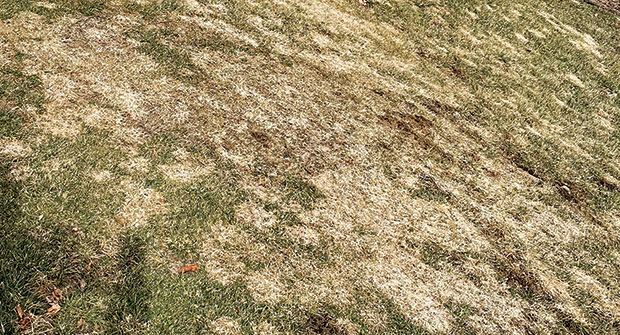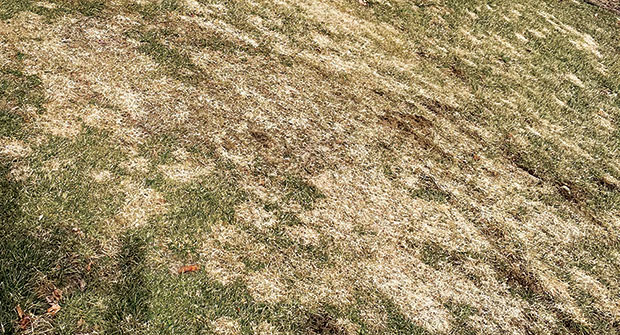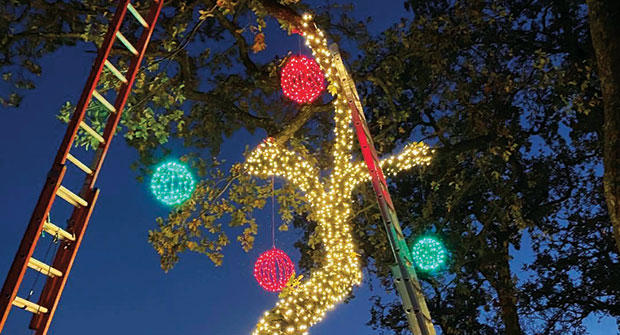
Snow mold is the name for several pathogens that occur following prolonged cool and wet conditions. Gray and speckled snow mold tend to surface in areas with extended snow coverage. Pink snow mold can occur anywhere that has extended wet conditions.
“For a good portion of the winter, the disease can occur really anywhere in the country that can have wet conditions during the winter that persist in the 40s and 50s,” says Paul Koch, Ph.D., assistant professor in the department of plant pathology at the University of Wisconsin-Madison.
Koch, along with Jason Jordan, owner of Spring-Green Lawn Care in Rockford, Ill.; Chuck Silcox, Ph.D., product development manager for Amguard Environmental Technologies; Brian Aynardi, Ph.D., Northeast research scientist for PBI-Gordon Corp.; and Bret Corbett, director of technical services for Prime Source, share some tips and tricks to stop snow mold in its tracks.
Start early
Jordan says contractors should think about snow mold in the fall. He leaves information with his clients on mowing height recommendations to prevent the pathogen from taking hold.
“We started leaving recommendations when we’re doing the winterizing application the year before to try to help minimize the impact of snow mold the following spring,” he says. “You want to minimize the amount of leaf surface that’s available for the snow mold to grow over the course of the winter.”
Aynardi adds, “The best prevention for gray and pink snow mold is fungicides applied in the fall prior to conditions favoring disease development, and prior to snow cover in the case of gray snow mold.”
Silcox says contractors should understand what type of snow mold pressure is common in their area. For high-pressure areas, it’s important to have a conversation with clients about preventive applications.
“The ideal situation is you treated a lawn in November, and come April, it’s clean as a whistle, and the neighbor’s lawn is brown and looks dead,” he says. “That’s a good selling point for the next year. Give people confidence that they’re spending their money for good reason.”
Adding an informational brochure comparing photos of treated and untreated lawns for snow mold could help encourage more clients to think about preventive applications.
Don’t neglect cultural practices
Improving drainage and airflow can help reduce disease pressure on susceptible turf, experts say. Late-season nitrogen applications can feed the pathogen.
“Make sure there is not excessive canopy growth going into winter, and do not over-fertilize with quick-release nitrogen,” Aynardi says.
Corbett recommends aerification and reducing thatch to eliminate pathogen buildup in the turf. High-traffic areas or places on a lawn where snow lingers are more susceptible to snow mold.
“Removing snow will be efficacious as far as reducing the severity of the disease,” he says.
As symptoms appear in the spring, Aynardi suggests lawn care operators (LCOs) encourage the turf to recover.
“Rake up dead plant material when green-up begins to occur, and add seed or fertility to encourage new growth to help patches heal,” he says.
Know what you’re applying
Silcox cautions lawn care professionals to read any product label before applying fungicides.
“LCOs need to be aware that not all products are labeled for use on home lawns,” he says. “Make sure you’re selecting one that is labeled for your use site.”
Another option for lawn care professionals to consider is granular versions of fungicides, Koch says.
“You spread them out and they’re pretty effective,” he says.


